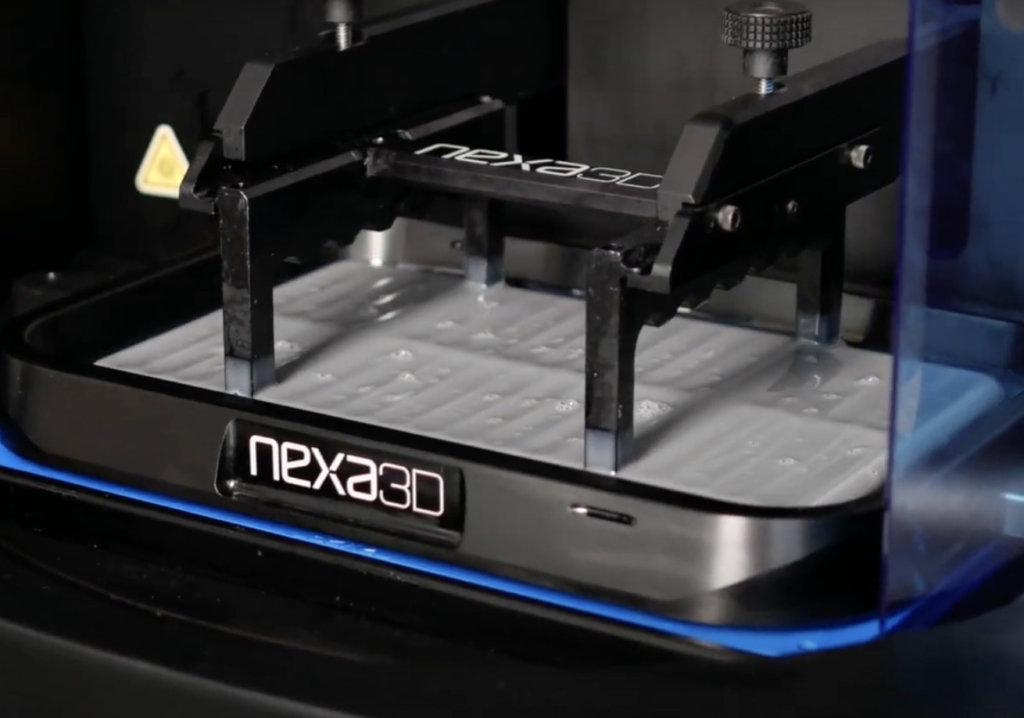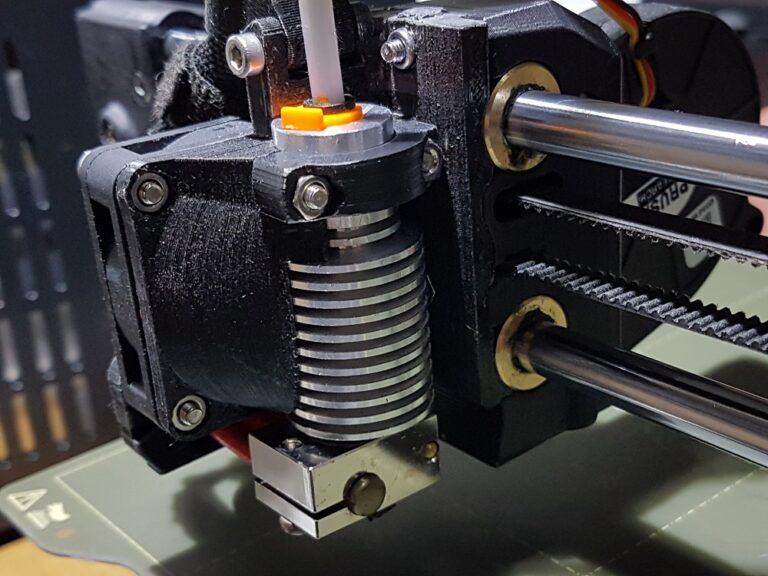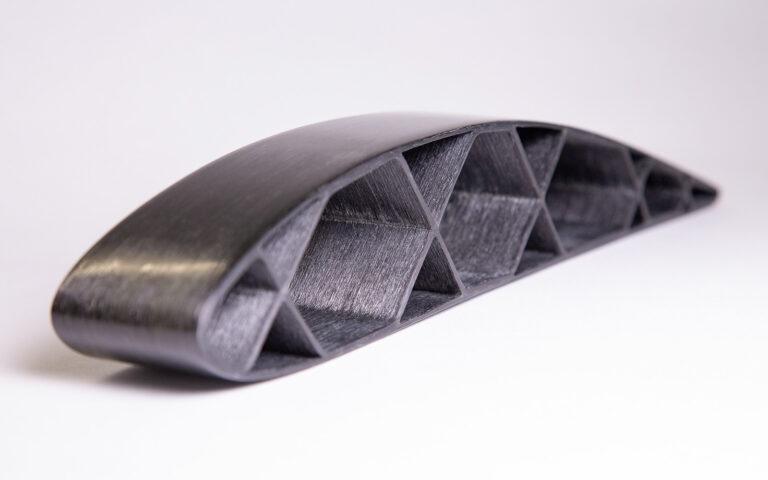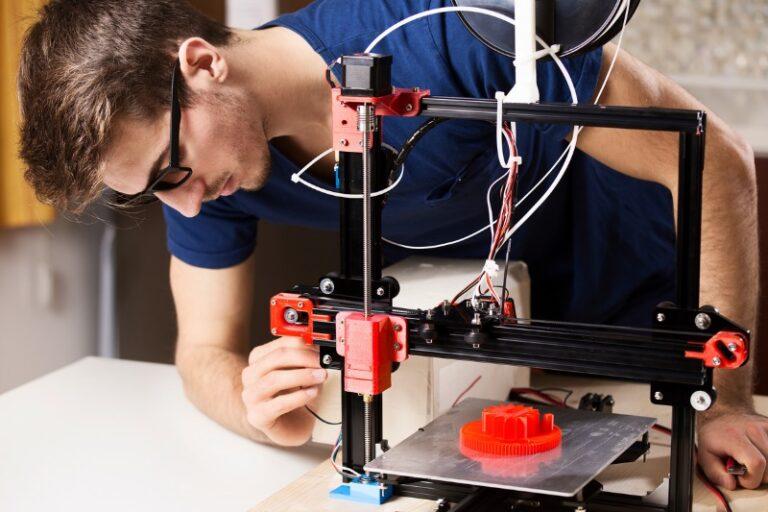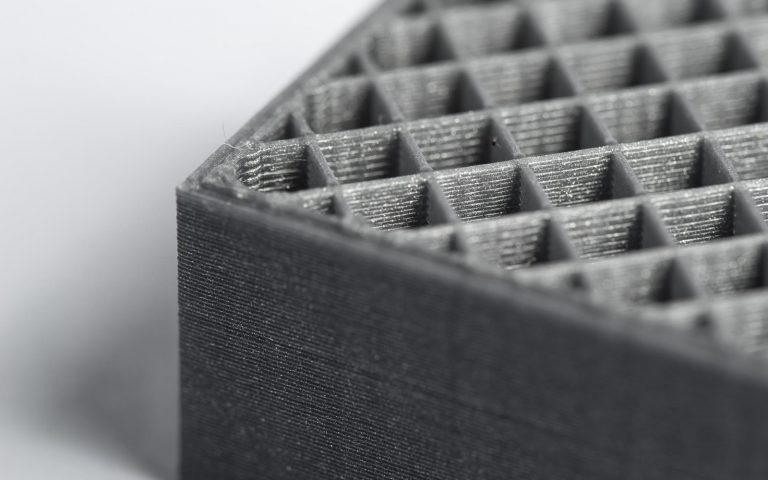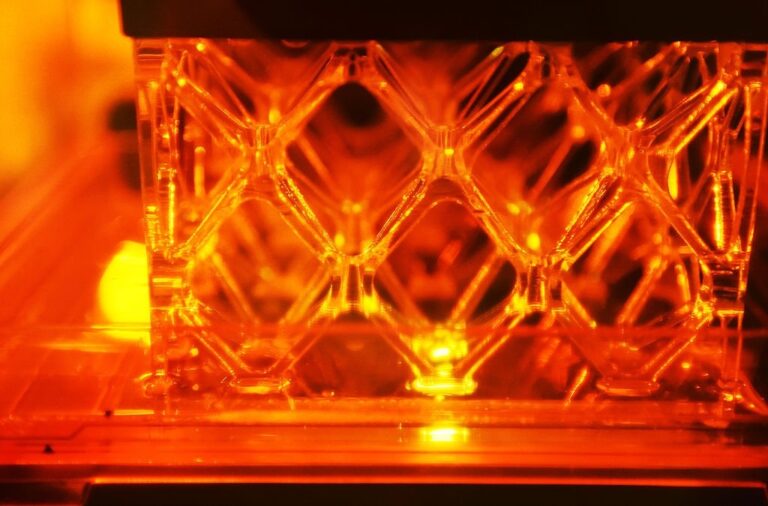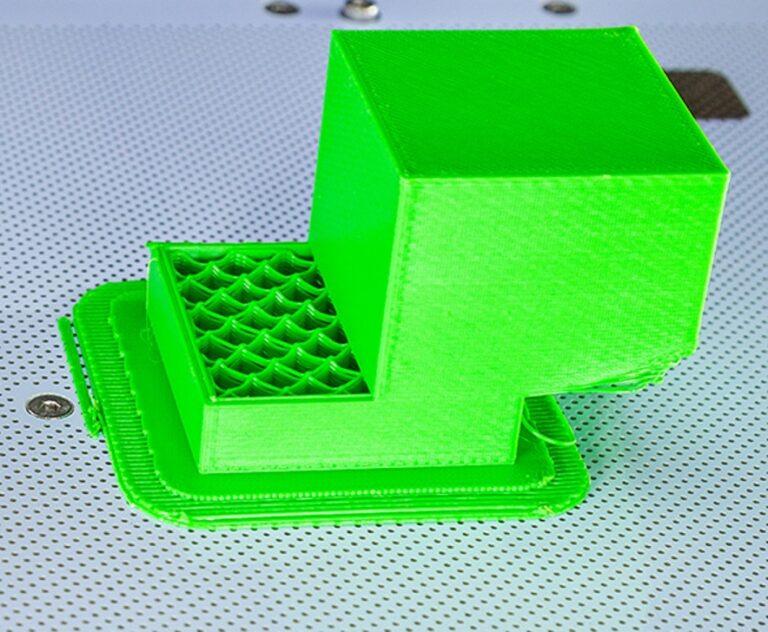Introduction
The quickest 3D printer available can significantly shorten the turnaround time for projects in the realm of 3D printing. Speed has become a crucial factor for professionals, hobbyists, and enthusiasts alike due to the quick advancements in technology. This tutorial intends to assist you in comprehending the elements that affect printing speed and in selecting the best printer to increase productivity. The correct printer can help you save time and resources while still producing prints of exceptional quality. Your process can also be optimized. 3D printing appears to have a speedier, more productive future than before.
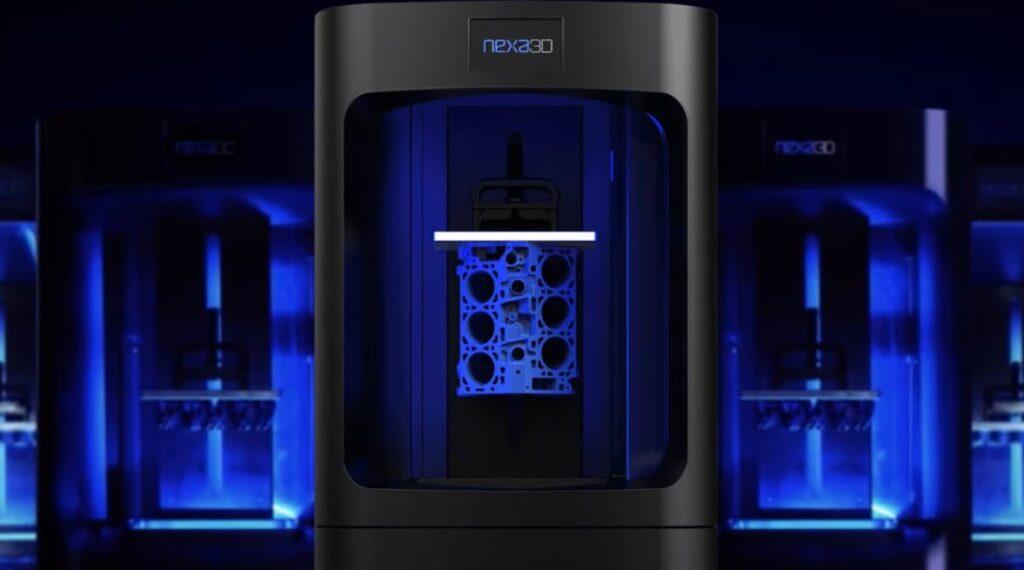
The importance of speed in 3D printing
The fastest 3D printer can be a game-changer for various applications and industries. Speed is crucial when it comes to rapid prototyping, where quick iteration cycles are key to innovation. A fast printer allows you to test multiple designs and make adjustments in less time, resulting in a more efficient product development process. In manufacturing, faster 3D printing speeds can lead to reduced lead times and improved on-demand production capabilities. For hobbyists and makers, quicker print times enable more projects to be completed and shared within a shorter time frame. Ultimately, speed plays a vital role in unlocking the full potential of 3D printing technology.
Factors to consider when choosing a fast 3D printer
When searching for the fastest 3D printer, several factors should be taken into account. First, consider the printer’s technology, as different methods offer varying levels of speed and precision. Next, evaluate the print quality, since a balance between speed and detail is essential for optimal results. Also, examine the printer’s hardware components and software capabilities, as these can significantly impact printing speeds. Material compatibility is another crucial factor, as some materials allow for faster printing than others. Lastly, don’t forget to assess the printer’s price, maintenance requirements, and customer support, as these factors can influence your overall experience and productivity.
Understanding the Basics of 3D Printing Speed
Understanding the fundamentals of 3D printing speed is crucial to comprehending the factors influencing the quickest 3D printer speeds. The speed at which items are manufactured can be significantly impacted by printer technology, such as FDM or SLA. The choice of material is important as some materials need more time to process than others. The overall print speed might also be impacted by the model’s intricacy. To balance speed and quality, print settings like layer height and infill percentage should be adjusted. The hardware and software features of the printer can also aid in streamlining the printing process for optimal effectiveness. You’ll be better able to select and use the fastest 3D printer for your needs if you grasp these principles.
Printer technology and its impact on speed
The technology behind the fastest 3D printer plays a significant role in determining the speed at which objects can be printed. There are several popular 3D printing technologies, each with its own set of advantages and limitations when it comes to speed.
Fused Deposition Modeling (FDM) is a widely used technology that extrudes thermoplastic filament layer by layer to create the desired object. The speed of FDM printers varies based on factors such as layer height, print head movement, and heating time. Upgrades to motors and extruders can improve FDM printer speeds, but there will always be a trade-off between speed and print quality.
Stereolithography (SLA) is another common 3D printing technology, which uses a light source to cure photopolymer resin layer by layer. While SLA printers can produce high-resolution prints, they often have slower print speeds than FDM printers due to the need for precise light exposure and curing times.
Selective Laser Sintering (SLS) and Digital Light Processing (DLP) are additional 3D printing technologies that have unique speed characteristics. SLS, which uses a laser to sinter powdered materials, can achieve faster print speeds than SLA. DLP, similar to SLA but utilizing a digital light projector, can also offer faster print times by curing entire layers at once.
Each of these technologies has its own set of strengths and weaknesses, and the fastest 3D printer for one user may not be the ideal choice for another. It’s essential to understand your specific needs and priorities when choosing a 3D printer technology to ensure you get the best balance of speed and quality for your projects.
The role of material selection and print settings
Material selection plays a crucial role in achieving the fastest 3D printer speeds. Different materials have distinct properties that can impact printing times. For instance, thermoplastic filaments used in FDM printers, such as PLA and ABS, have varying melting points, which can affect heating times and, ultimately, the print speed. Choosing the right material for your project, while also considering its compatibility with your printer, can help optimize print speeds.
In addition to material selection, print settings are vital in determining how fast your 3D printer can complete a project. Layer height is a key setting that affects both print speed and quality. Lower layer heights produce finer details but take longer to print, whereas higher layer heights result in faster print times but with reduced resolution. Finding the right balance for your specific needs is crucial in maximizing print speed without sacrificing quality.
Infill percentage is another important print setting to consider. A higher infill percentage creates a denser and stronger print, but it also increases the printing time. Conversely, a lower infill percentage can speed up the printing process but may result in a weaker final product. Adjusting this setting based on the strength requirements of your project can help you achieve optimal print times.
Other print settings, such as print speed, shell thickness, and support structures, can also impact the overall printing time. By understanding the effects of these settings and adjusting them accordingly, you can optimize the performance of your fastest 3D printer, striking the perfect balance between speed, quality, and durability for your specific project needs.
Balancing print speed and quality
To provide the best results, the fastest 3D printer must strike the ideal balance between speed and quality. Increasing print speed can save time and costs, but it can also result in issues with accuracy, layer bonding, or visible print lines, which can all lower print quality. Understanding the relationship between print settings, materials, and the particular requirements of your project is crucial for striking the correct balance. You may carefully tune your printer’s performance so that your finished product reaches your desired degree of detail and strength without compromising efficiency by modifying variables like layer height, infill percentage, and print speed.
Key Features to Look for in a Fast 3D Printer
When searching for the fastest 3D printer, it’s essential to consider key features that can enhance speed and performance. High-quality hardware components, such as powerful motors and efficient drive systems, can improve print speed and accuracy. Advanced extruder designs and reliable print heads contribute to a smoother printing process. A heated build platform can help reduce print time by minimizing warping and ensuring better adhesion. Additionally, software capabilities like slicing optimization, adaptive layer height, and print speed control can further enhance your printer’s performance. By focusing on these critical features, you can find a 3D printer that excels in both speed and quality, enabling you to maximize productivity and bring your creative visions to life.
High-performance hardware components
High-performance hardware components are integral to the fastest 3D printer’s ability to deliver rapid, efficient results. Powerful motors and precision drive systems ensure smooth, accurate movement of the print head, contributing to faster print speeds. Advanced extruder designs enable consistent filament flow and improved layer bonding, minimizing print errors and reducing print times. A reliable, responsive heated build platform helps maintain proper adhesion and prevents warping, further optimizing the printing process. By prioritizing these crucial hardware components, you can ensure your 3D printer operates at peak performance, maximizing speed without sacrificing quality or reliability.
Motors and drive systems
Motors and drive systems play a pivotal role in the performance of the fastest 3D printer. High-quality stepper motors enable smooth, precise movement of the print head, directly impacting print speed and accuracy. Efficient drive systems, such as belt-driven or linear rail systems, help maintain consistent motion and reduce vibrations, further improving the printer’s performance. When selecting a 3D printer, considering the quality of its motors and drive systems can help you find a model that delivers faster print times without compromising the integrity of your final product. This attention to detail can ultimately contribute to a more streamlined and efficient printing experience.
The print head and extruder designs
The print head and extruder designs are essential components of the fastest 3D printer, directly influencing print speed and quality. Innovative extruder designs ensure consistent, smooth filament flow, reducing the risk of jams and print failures. A reliable print head can maintain accurate temperature control, enabling faster printing without sacrificing layer bonding or surface finish. When evaluating 3D printers, focusing on the quality and design of the print head and extruder can help you find a model that strikes the perfect balance between speed and quality, leading to a more efficient and satisfying printing experience.
Heated build platforms
Heated build platforms contribute to the efficiency of the fastest 3D printer by promoting better adhesion and reducing warping during the printing process. A high-quality heated build platform ensures even heat distribution, allowing materials to adhere more effectively and preventing print detachment. This feature is particularly beneficial when printing with materials prone to warping, such as ABS or Nylon. By maintaining a stable print environment, heated build platforms can help optimize the printing process, allowing you to achieve faster print times without compromising the quality or integrity of your final product.
Advanced software capabilities
Advanced software capabilities play a crucial role in unlocking the full potential of the fastest 3D printer. Slicing software and print preparation tools can optimize print settings and speed for your specific project. Features such as adaptive layer height and speed optimization can significantly enhance print times while maintaining quality. Moreover, user-friendly firmware and printer control options allow for fine-tuning and monitoring, ensuring the most efficient printing process. By harnessing the power of advanced software capabilities, you can further improve your 3D printer’s performance, achieving faster print times and exceptional results for your projects.
Slicing software and print preparation
Slicing software and print preparation are vital components in optimizing the performance of the fastest 3D printer. Quality slicing software translates your digital model into a series of instructions for the printer, ensuring efficient and accurate print execution. Print preparation involves fine-tuning settings, such as layer height, print speed, and infill percentage, to achieve the ideal balance between speed and quality. By investing time in mastering slicing software and print preparation, you can significantly improve your 3D printer’s efficiency, resulting in faster print times while maintaining the desired level of detail and strength in your final product.
Adaptive layer height and speed optimization
Adaptive layer height and speed optimization are advanced software features that can enhance the performance of the fastest 3D printer. The Adaptive layer height adjusts the layer thickness based on the model’s complexity, enabling faster printing in less detailed areas without sacrificing quality. Speed optimization algorithms analyze the model and print settings to determine the most efficient print speed, balancing print time and precision. By leveraging these cutting-edge features, you can optimize your 3D printer’s performance, achieving faster and more efficient results while maintaining the desired quality and detail in your finished projects.
Firmware and printer control options
Firmware and printer control options play a significant role in managing the fastest 3D printer’s performance. High-quality firmware ensures seamless communication between the printer’s hardware and software components, enabling efficient operation. Printer control options, such as temperature management, print speed adjustments, and real-time monitoring, empower users to fine-tune their printer’s performance for optimal results. By utilizing intuitive firmware and control options, you can maximize your 3D printer’s efficiency, achieving faster print times without sacrificing the quality or accuracy of your finished projects.
Top Fast 3D Printers to Consider
Professional desktop 3D printers are compact, affordable, and easy to use, making them ideal for a wide range of applications. Here are some of the fastest desktop 3D printers currently on the market:
The Nexa3D XiP is an ultrafast 3D printer that uses Lubricant Sublayer Photo-curing (LSPc) technology to deliver high-quality prototypes at a rapid pace. With a build time of about 87 minutes, it can print parts up to 10 times faster than other leading 3D printers on the market. It’s also affordable, with printing packages starting at $6295.
The Anycubic Photon M3 Plus is another top-performing 3D printer that offers quick print times and a large build plate size. It has a print speed of up to 70mm/hour and is capable of printing various materials including specialty and advanced resin materials. Anycubic Photon M3 Plus costs $700.
FLSun QQ-S is a budget-friendly 3D printer suitable for hobbyists and professionals with a print speed of 60 mm/s. It features an all-metal frame and a heated bed that can reach temperatures up to 110°C. The QQ-S cost about $339.
The QIDI Tech X-Pro 3D Printer is an FDM 3D printer with a heated aluminum print bed that can reach temperatures up to 110°C. It has a printing speed of up to 24cc/h and a layer resolution of 0.1 – 0.4 mm. It is priced at around $650.
The Original Prusa i3 MK3S+ is the flagship of Prusa Research’s 3D printer line. It features a fully enclosed frame and a graphical LCD display with easy menu navigation. The print area of the i3 MK3S+ now measures 9.8 x 8.3 x 8.3 inches, and it utilizes PrusaSlicer, the proprietary software suite developed by the company. It costs about $1,099.
Printer comparisons and specifications
Here is a comparison table of the top fast 3D printers:
| Printer | Print Speed | Build Volume | Cost | Pros | Cons | Best for |
|---|---|---|---|---|---|---|
| Nexa3D XiP | Up to 180 mm/hour | 4.8L | $6,295 | Lubricant Sublayer Photo-curing technology, Large build volume, Affordable | Best for professional printing only | Prototypes and production-grade applications for engineering, dental, and other industries |
| Anycubic Photon M3 Plus | Up to 70 mm/hour | 5.9 liters | $700 | Large build plate, Good build quality, Capable of printing various materials | Noisy operation, Not meant for industrial or professional use | Hobbyist 3D printing budgets under $1,000 |
| FLSun QQ-S | 60 mm/s | 255 x 255 x 360 mm | $339 | Budget-friendly, Durable all-metal frame, High speed and large build volume | Unable to create fine feature details or high-quality surface finish, Noisy operation, Not suitable for large-scale, professional projects | Budget-minded users looking for a large build volume |
| QIDI Tech X-Pro 3D Printer | Up to 24cc/h | 230x150x150mm | $650 | Large build size, Low price for the features it offers, Heated aluminum print bed | Unable to create fine feature details or high-quality surface finish, Limited software compatibility, Lacks resin printer features | Hobbyists & engineers who need a fast FDM 3D printer |
| Original Prusa i3 MK3S+ | N/A | 9.8 x 8.3 x 8.3 inches | $1,099 | Fully enclosed frame, Graphical LCD display with easy menu navigation | When compared to the price, the build volume is small, Unable to achieve high-quality surface finish since it’s a filament-based printer | Hobbyists and experienced 3D printer users |
Pros and cons of each printer model
| Printer Model | Pros | Cons | Best for |
|---|---|---|---|
| Nexa3D XiP | – Prints at speeds of up to 180 mm per hour.<br>- Large build volume of 4.8L.<br>- Provides ultimate flexibility to materials needed.<br>- Easily upgradeable.<br>- Easy to operate.<br>- Open material platform (ability to use with third-party resins).<br>- Comes with in-built wash packages for post-process.<br>- Produced from aluminum materials, making it recyclable. | – Best for professional printing, not hobbyist printers. | Prototypes and production-grade applications for engineering, dental, and other industries. |
| Anycubic Photon M3 Plus | – Good build quality.<br>- Large and easy-to-navigate touchscreen.<br>- Large build plate.<br>- Relatively simple to set up. | – Very noisy fans.<br>- Photon Workshop crashes often.<br>- Fumes can be exhausted from the case.<br>- Not meant for industrial or professional use.<br>- Manual build plate leveling, which can be time-consuming. | Hobbyist 3D printing budgets under $1,000. |
| FLSun QQ-S | – Suitable for several professionals and hobbyists looking for a compact option.<br>- High speed and large build volume. | – Unable to create fine feature details or high-quality surface finish.<br>- Noisy operation.<br>- Not suitable for large-scale, professional projects. | Budget-minded users looking for a large build volume. |
| QIDI Tech X-Pro 3D Printer | – Low price for the features it offers.<br>- Large build size for larger projects. | – Unable to create fine feature details or high-quality surface finish.<br>- Limited software compatibility.<br>- Lacks resin printer features. | Hobbyists & engineers who need a fast FDM 3D printer. |
| Original Prusa i3 MK3S+ | – Fully enclosed frame to protect prints from drafts and dust.<br>- Graphical LCD display with easy menu navigation. | – When compared to the price, the build volume is small.<br>- Unable to achieve high-quality surface finish since it’s a filament-based printer. | Hobbyists and experienced 3D printer users. |
Price ranges and target audience
Here is the table comparing the price ranges and target audience for each of the 3D printers mentioned:
| Model | Price Range | Target Audience |
|---|---|---|
| Nexa3D XiP | $6,295 and up | Professional users, engineers, and manufacturers |
| Anycubic Photon M3 Plus | Around $700 | Hobbyists with 3D printing budgets under $1,000 |
| FLSun QQ-S | Around $339 | Budget-minded users looking for a large build volume |
| QIDI Tech X-Pro 3D Printer | Around $650 | Hobbyists and engineers who need a fast FDM 3D printer |
| Original Prusa i3 MK3S+ | Around $1,099 | Hobbyists and experienced 3D printer users |
Note: Prices may vary depending on the specific model and vendor, and the target audience may also vary depending on the specific use case.
Tips for Optimizing Your 3D Printing Workflow
There are a few suggestions to keep in mind if you want to streamline your 3D printing process and get the most out of your quickest 3D printer. Priority should be given to selecting the proper material for your project and modifying print parameters accordingly. The print speed and quality can be increased by making use of cutting-edge software features like adaptive layer height and speed optimization. Regular maintenance can also result in a more effective and dependable printing process, including the cleaning and lubricating of hardware components. Additionally, employing a top-notch slicing program and spending money on firmware and printer control options will assist optimize the performance of your printer. By putting these suggestions into practice, you may improve your 3D printing workflow, shorten print times, and deliver outstanding results for your projects.
Proper printer maintenance and calibration
Proper maintenance and calibration are crucial for ensuring the fastest 3D printer’s reliable and efficient operation. Regular cleaning of the print head, extruder, and other hardware components can prevent clogs and ensure smooth filament flow. Regular lubrication of moving parts can also prevent wear and tear, contributing to a longer printer lifespan. Calibration, including leveling the print bed and adjusting print settings, ensures accurate print execution and reduces the risk of errors or failed prints. Regular checks of firmware and software updates can also ensure optimal printer performance. By prioritizing maintenance and calibration, you can help ensure your 3D printer operates at peak performance, delivering fast, efficient results without compromising quality or reliability.
Choosing the right print settings for your project
Choosing the right print settings for your project is crucial to achieving optimal results with the fastest 3D printer. Factors such as layer height, print speed, and infill percentage can significantly impact print quality and speed. For projects that require fine detail, a lower layer height can provide greater accuracy but may increase print time. Similarly, adjusting print speed can help reduce print time, but it’s essential to balance this against print quality to avoid sacrificing accuracy or surface finish. The infill percentage is another important factor, with higher percentages providing greater strength but also increasing print time. By carefully considering these settings and how they impact your project, you can find the right balance between speed and quality, optimizing your 3D printer’s performance to achieve exceptional results.
Utilizing advanced materials and print techniques
Utilizing advanced materials and print techniques can help maximize the fastest 3D printer’s potential, enabling even faster print times and exceptional quality. High-performance materials, such as carbon fiber or metal composites, can provide greater strength and durability than standard filaments, while also enabling faster print times. Utilizing print techniques such as variable layer height or adaptive infill can further optimize print speed and quality, allowing for faster and more efficient printing while maintaining the desired level of detail and strength. By exploring these advanced materials and techniques, you can expand your printing capabilities and achieve exceptional results with your 3D printer.
Understanding the trade-offs between speed and quality
Understanding the trade-offs between speed and quality is crucial when working with the fastest 3D printer. While faster print times can be achieved through adjustments to print settings or utilizing advanced techniques, it’s essential to balance this against print quality. Sacrificing quality for speed can lead to weaker or less accurate prints, which may not meet project requirements. Conversely, prioritizing quality over speed may result in longer print times or unnecessary material usage. It’s important to assess project requirements and determine the optimal balance between speed and quality, ensuring the fastest 3D printer’s performance meets project goals while delivering the desired level of detail and strength in the final product.
Real-World Applications of Fast 3D Printers
The fastest 3D printers have numerous real-world applications across various industries, from aerospace to medical to consumer goods.
In the aerospace industry, fast 3D printers can quickly produce parts for prototyping and testing, reducing lead times and costs while maintaining precision and durability.
In the medical field, 3D printing technology can be used to produce personalized medical devices and implants quickly. For example, dental laboratories can use 3D printers to produce custom-fitted dental crowns and bridges within hours, reducing the wait time for patients.
In the consumer goods industry, fast 3D printers can help reduce production costs and lead times while enabling mass customization. This technology is also transforming the fashion industry, where designers can create and produce custom clothing pieces quickly and efficiently.
Moreover, 3D printing technology has revolutionized the manufacturing industry by enabling rapid prototyping and small-scale production of complex parts and components. This has transformed the way companies approach product development, allowing for more efficient and streamlined processes.
Overall, the fastest 3D printers have numerous real-world applications, enabling faster and more efficient production while maintaining quality and precision. As the technology continues to advance, the possibilities for its application are endless, making it an exciting time for 3D printing and the industries it serves.
Rapid prototyping and product development
Using the quickest 3D printers has several advantages, including quick prototyping and product development. Companies can swiftly develop and improve product designs using 3D printing technology, cutting down on the time and expenses involved in using conventional manufacturing processes.
Rapid iteration of product ideas is another benefit of 3D printing technology. This enables real-time testing and modifications, which ultimately results in better-finished items. Designers can rapidly and correctly create high-quality prototypes using the quickest 3D printers, speeding up the development process.
Additionally, the power of 3D printing technology to create intricate geometries and forms allows designers to explore novel ideas and push the limits of conventional design. Because of the technology’s adaptability and flexibility, designers can produce prototypes with varied degrees of accuracy and fineness.
Companies may streamline their product development process and get items to market faster and more effectively than ever before by leveraging the quickest 3D printers. The technology makes it possible to reduce material waste and production costs, which makes it a more alluring option for businesses in numerous industries. In general, quick prototyping and product development using the fastest 3D printers are revolutionizing the industrial sector and opening the door for the release of fresh, cutting-edge items.
Time-sensitive projects and custom manufacturing
The fastest 3D printers have made it possible to produce custom parts and products quickly, making them ideal for time-sensitive projects and custom manufacturing.
One major advantage of using 3D printing technology is its ability to produce complex and customized products without the need for specialized tooling or equipment. This means that companies can produce one-off or low-volume parts quickly and cost-effectively, without having to invest in expensive tooling or molds.
The speed of 3D printing technology also makes it ideal for time-sensitive projects, such as creating replacement parts or producing prototypes quickly for customer approval. The ability to print parts on demand means that companies can reduce lead times and ensure that their projects remain on schedule.
Moreover, 3D printing technology allows for customization and personalization of products, enabling companies to meet the unique needs of their customers. This can include everything from personalized medical implants to customized consumer goods.
By utilizing the fastest 3D printers, companies can respond quickly to customer demands and create customized products more efficiently than ever before. This technology is transforming the manufacturing industry, enabling new possibilities and innovative approaches to product design and production. As the technology continues to advance, it’s expected that 3D printing will become an even more critical tool for time-sensitive projects and custom manufacturing.
The impact of fast 3D printers on the maker community
Fast 3D printers have had a tremendous impact on the maker movement, opening up new avenues for creativity and innovation for individuals and microbusinesses. A greater number of people may experiment with 3D printing and turn their ideas into finished things as the technology becomes more accessible and affordable.
The maker community is now able to generate finished products and high-quality prototypes rapidly and effectively without the use of pricy manufacturing machinery thanks to the quickest 3D printers. The playing field has been leveled for entrepreneurs and small enterprises, enabling them to compete with bigger businesses in terms of product development and production.
The ability to customize and customize things has also given makers more leverage, enabling them to develop one-of-a-kind solutions for their clients. Traditional production techniques cannot accommodate this amount of flexibility, thus 3D printing is becoming a more and more common option for manufacturers who want to push the limits of conventional design.
The maker community has benefited from the influence of quick 3D printers by seeing increased collaboration and knowledge sharing. Online connections among makers allow them to exchange best practices, designs, and ideas, building a feeling of community and encouraging innovation.
Conclusion
In conclusion, the fastest 3D printers offer numerous benefits for various industries and makers alike. The technology has transformed manufacturing processes, enabling faster and more efficient production while maintaining quality and precision. By understanding the key factors that impact 3D printing speed and quality, choosing the right printer and settings, and utilizing advanced materials and print techniques, it’s possible to achieve exceptional results. Proper maintenance and calibration are also essential for ensuring the printer’s reliable and efficient operation. The impact of fast 3D printers is significant and will continue to shape the manufacturing industry and innovation in the future. As technology continues to advance, the possibilities for its application are endless, making it an exciting time for 3D printing and the industries it serves.
The ongoing evolution of 3D printing speed and capabilities
The ongoing evolution of 3D printing speed and capabilities is advancing at an incredible pace. As technology continues to improve, the fastest 3D printers will become even faster, and their capabilities will continue to expand. New materials and techniques will emerge, enabling even greater precision, speed, and durability in printed products. Additionally, software advances will provide more comprehensive control over the printing process, allowing for greater customization and flexibility. As the technology becomes more accessible and affordable, it will continue to transform manufacturing processes, enabling even small businesses and individuals to harness its potential. Overall, the future of the fastest 3D printers is bright, and their impact on manufacturing, innovation, and creativity is expected to grow significantly in the coming years.
The importance of selecting the right printer for your needs
Selecting the right printer for your needs is critical when working with the fastest 3D printers. The printer’s speed and capabilities must align with the specific requirements of your project. The wrong printer can lead to compromised quality or slower print times, resulting in delays or added costs. Therefore, it’s important to assess your needs carefully and consider factors such as budget, desired print quality, and the type of materials you intend to use. Additionally, you should consider the printer’s hardware and software capabilities, including the print head and extruder design, heated build platform, and firmware options. Proper research and understanding of your needs can help you make an informed decision when selecting the right printer for your project, ensuring that you achieve the desired results while maximizing the printer’s capabilities.
The future of fast 3D printing technology
The future of fast 3D printing technology is exciting and promising. As the technology continues to advance, the fastest 3D printers will become even faster, and their capabilities will expand. New materials will emerge, enabling printing with even greater precision, durability, and flexibility. Additionally, software advances will provide even more comprehensive control over the printing process, allowing for greater customization and flexibility. As a result, 3D printing will continue to transform the manufacturing industry and revolutionize product development, enabling faster and more efficient production while maintaining quality and precision. The ongoing evolution of fast 3D printing technology promises to bring exciting opportunities for innovation and creativity, enabling even greater possibilities for businesses and makers alike.
How to Optimize Your 3D Printing Workflow with the Fastest 3D Printer?
By following these steps, you can optimize your 3D printing workflow with the fastest 3D printer, enabling you to achieve exceptional results and maximize the printer’s capabilities.
- Assess Your Needs
Before selecting a printer, assess your needs carefully. Consider your budget, the desired print quality, the type of materials you intend to use, and the specific requirements of your project.
- Select the Right Printer
Select a printer that aligns with your needs. Consider factors such as speed, build volume, print quality, and compatibility with the materials you intend to use.
- Proper Maintenance and Calibration
To ensure your printer operates efficiently, perform regular maintenance and calibration. This includes cleaning the print head, adjusting the bed leveling, and updating the firmware.
- Choose the Right Print Settings
Select the right print settings for your project. This includes adjusting the layer height, infill density, print speed, and temperature settings based on the material and object being printed.
- Utilize Advanced Materials and Print Techniques
Utilize advanced materials and print techniques to achieve the desired results. This includes exploring new materials, using multi-material printing, and utilizing post-processing techniques such as sanding and painting.
- Balance Speed and Quality
Balance speed and quality to achieve the desired results. This includes selecting the right print settings, materials, and print techniques while maintaining a reasonable print time.
- Proper Post-Processing
Perform proper post-processing to achieve the desired finish. This includes sanding, painting, and finishing techniques.
- Continuously Improve Your Workflow
Continuously improve your workflow by staying up-to-date with the latest software, hardware, and materials. Attend industry events, participate in online communities, and experiment with new techniques to improve your workflow over time.
FAQs
The fastest 3D printers on the market can achieve print speeds of up to several hundred millimeters per second. However, the actual print speed will depend on various factors such as the material being used, the print settings, and the complexity of the object being printed.
Speed is an important factor in 3D printing, particularly in manufacturing and product development. Faster print speeds enable more efficient production and reduced lead times, which can ultimately lower costs and increase productivity.
When choosing a fast 3D printer, consider factors such as print speed, build volume, print quality, compatibility with materials, hardware and software capabilities, and ease of use.
Yes, it is possible to achieve both speed and quality with a fast 3D printer. However, balancing speed and quality will require careful consideration of the printer’s capabilities and the print settings, materials, and techniques used.

